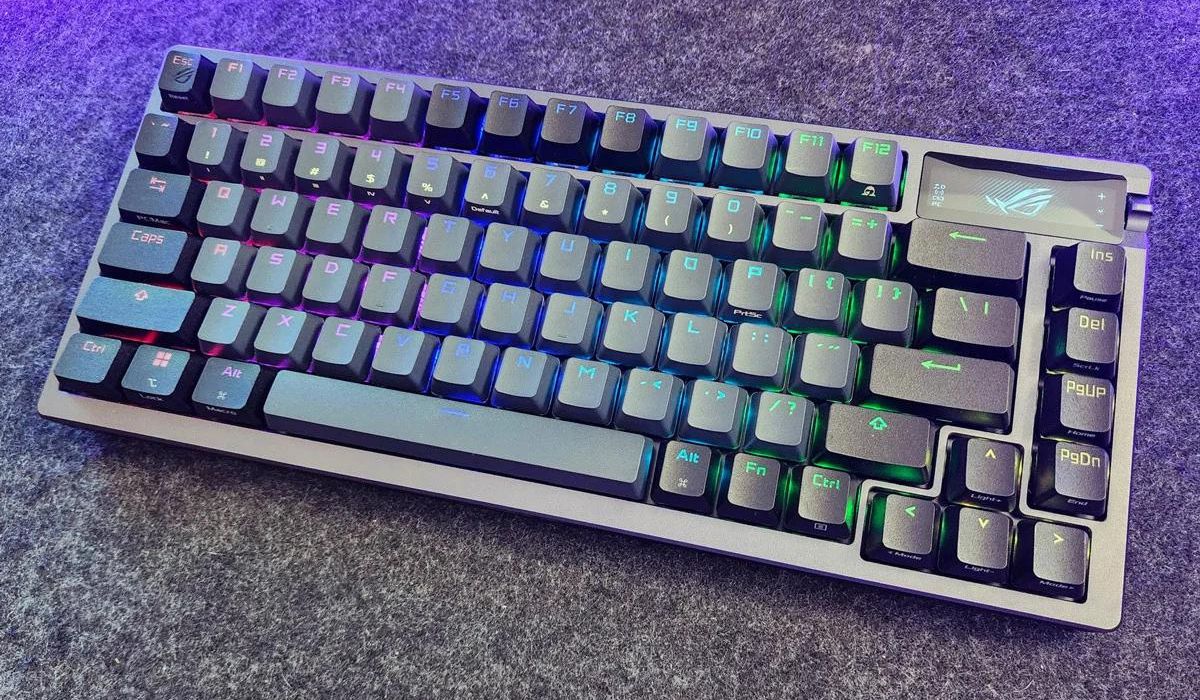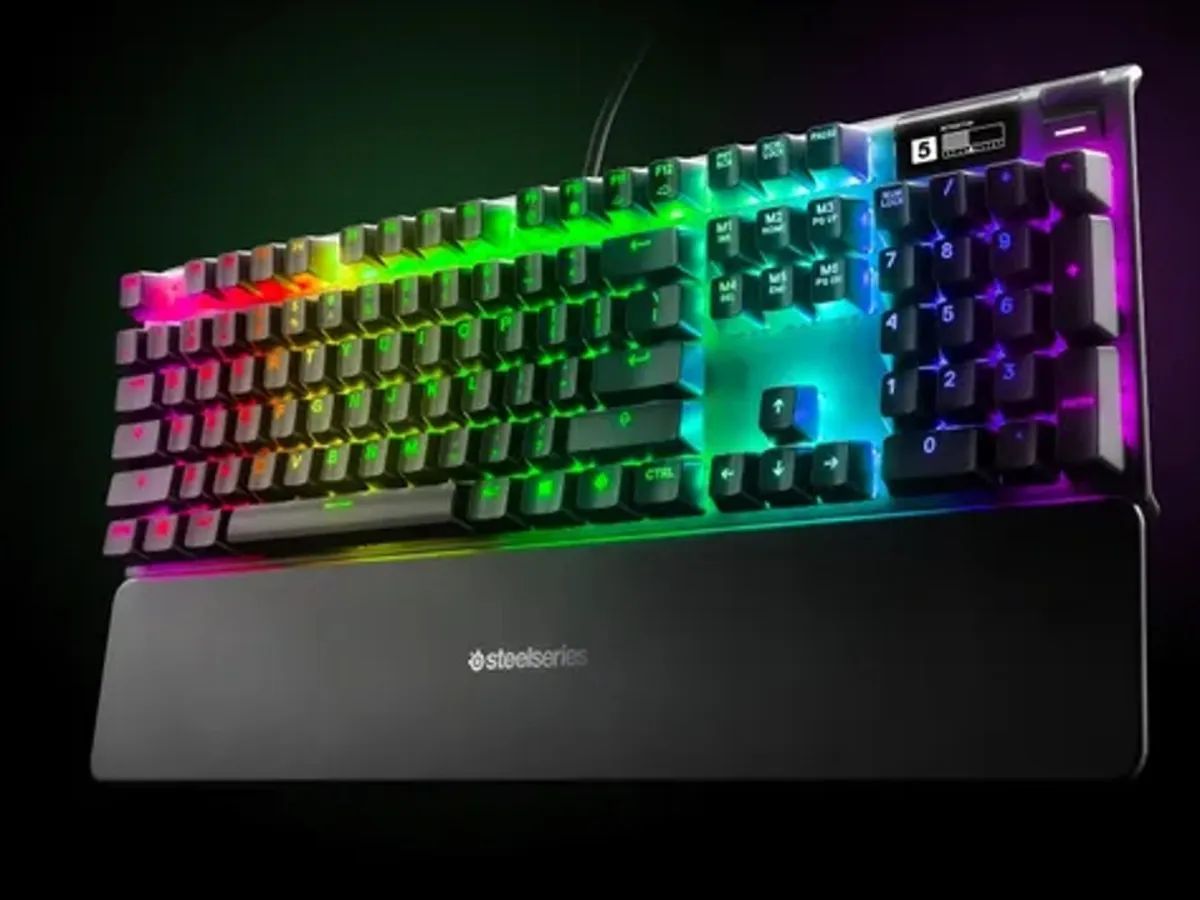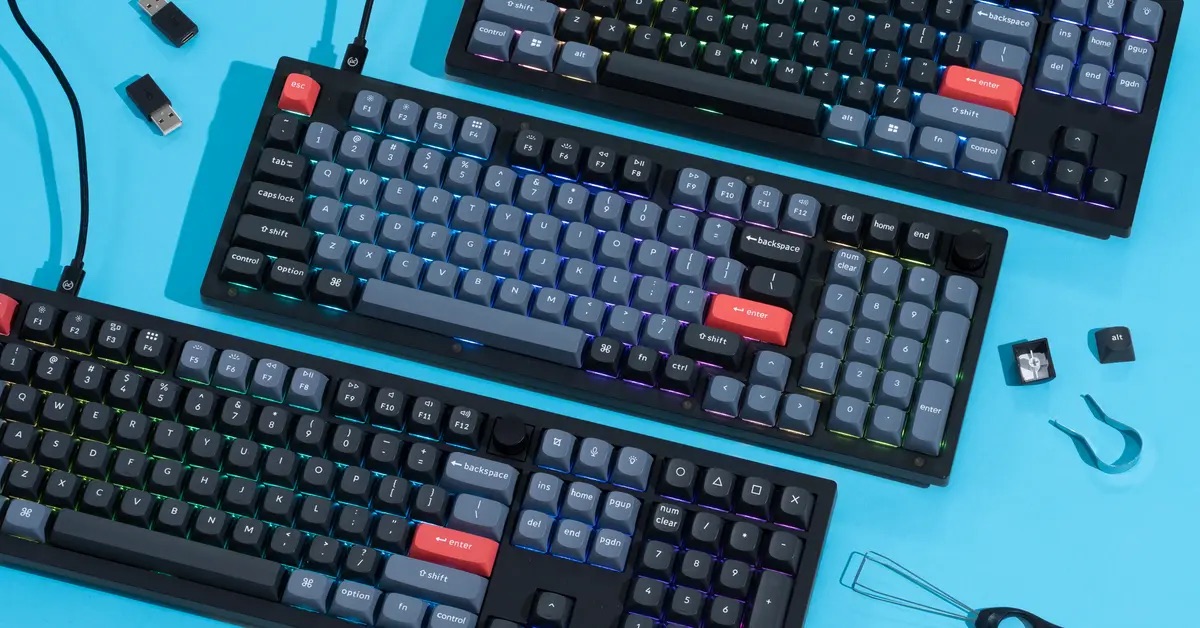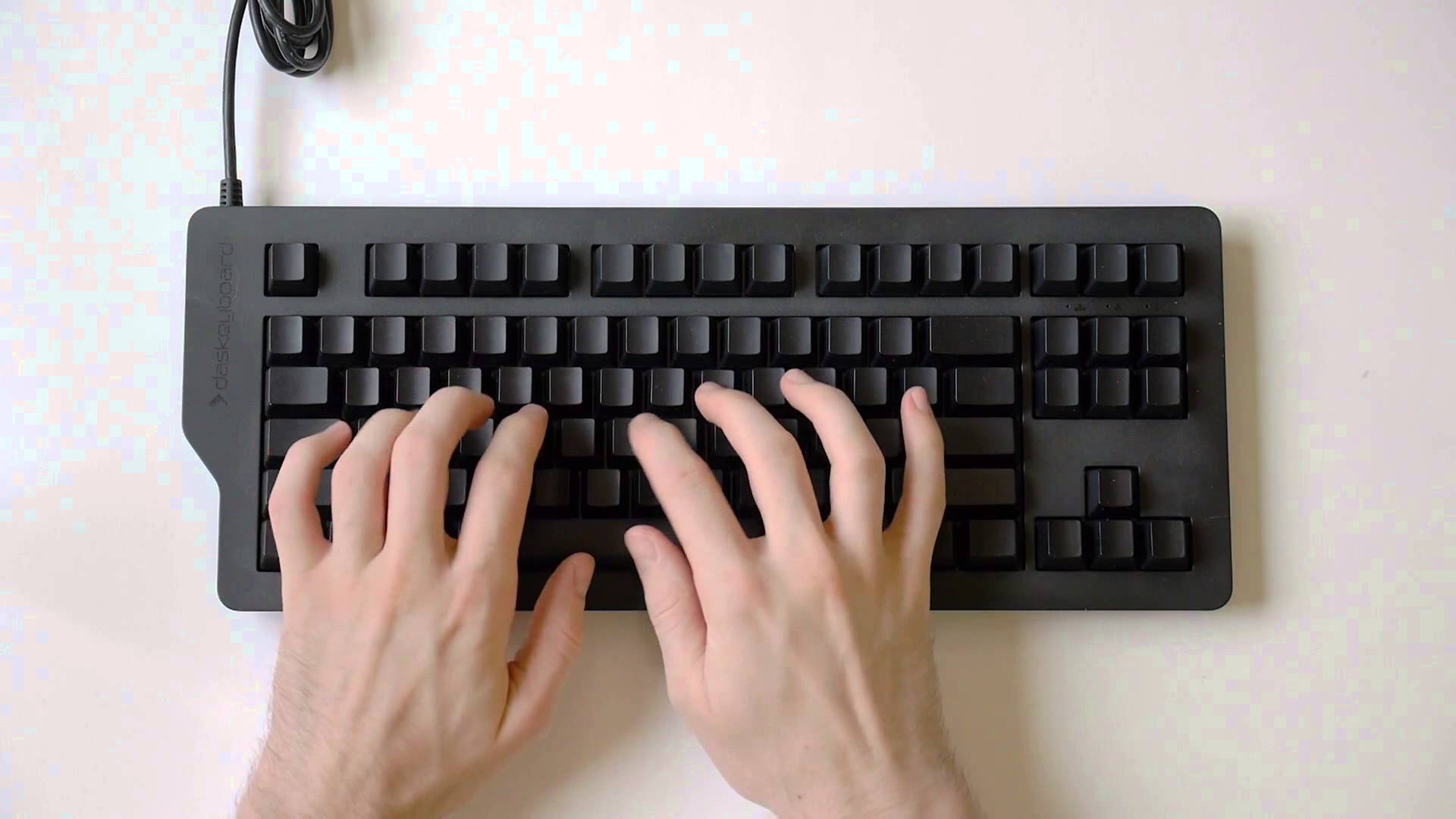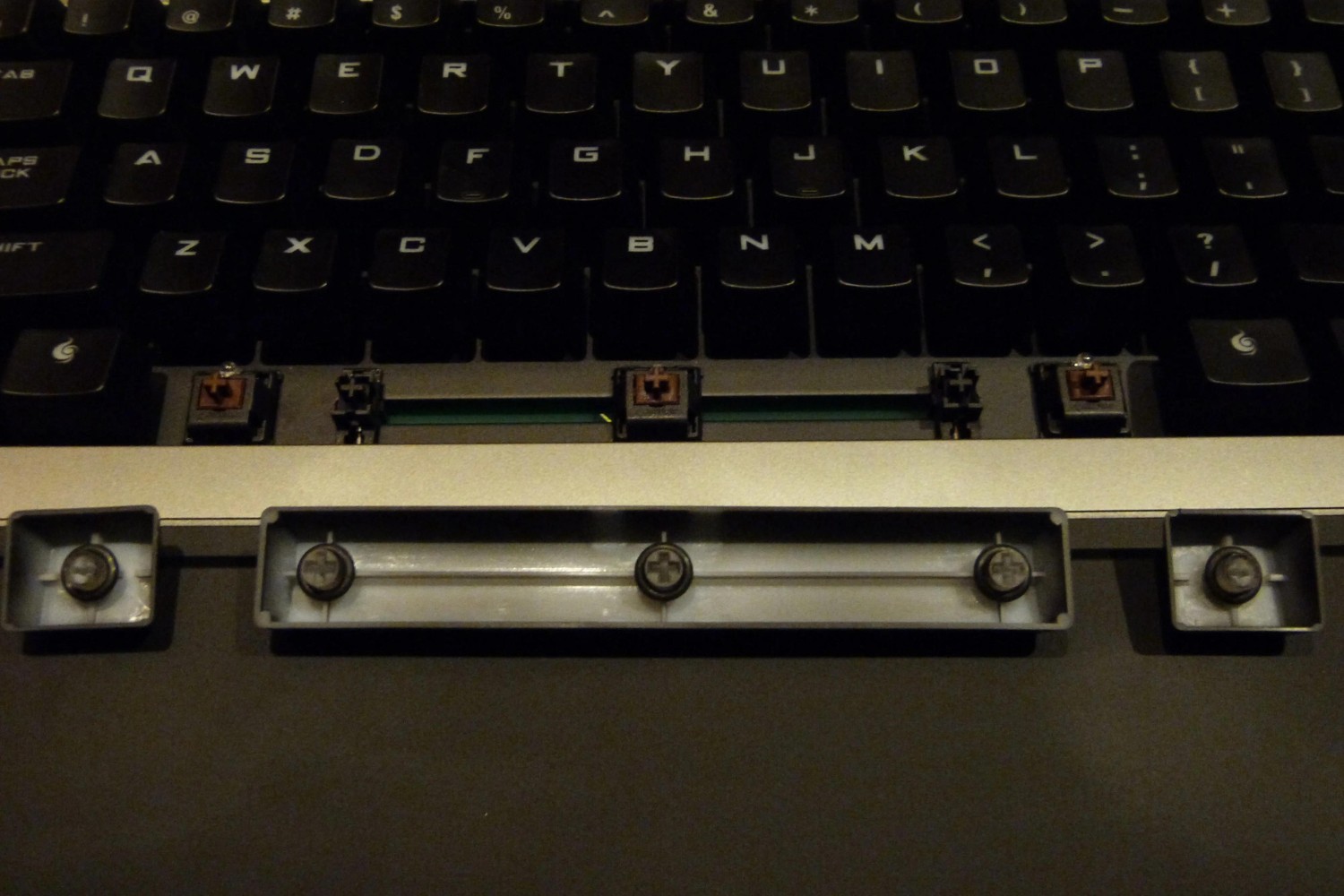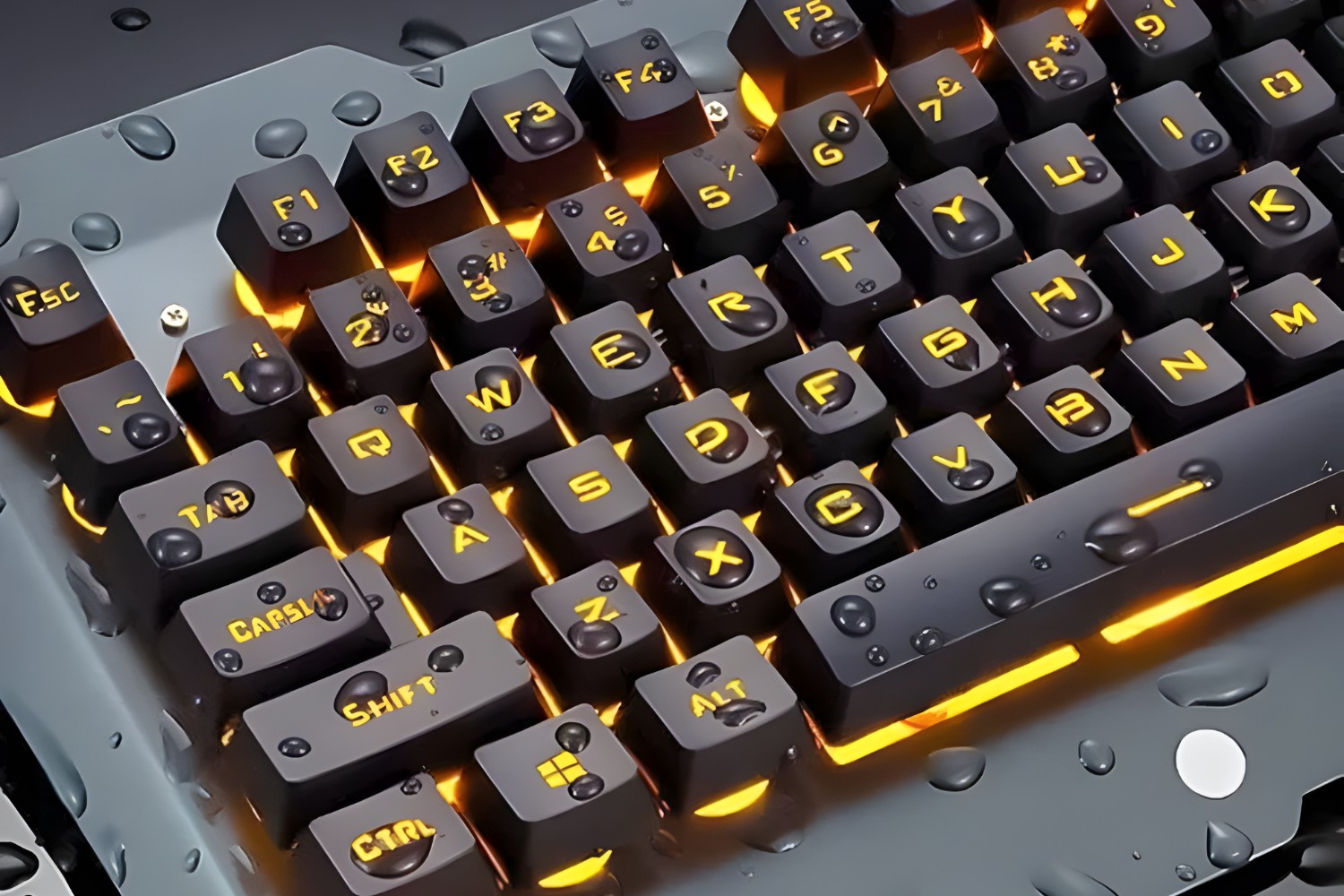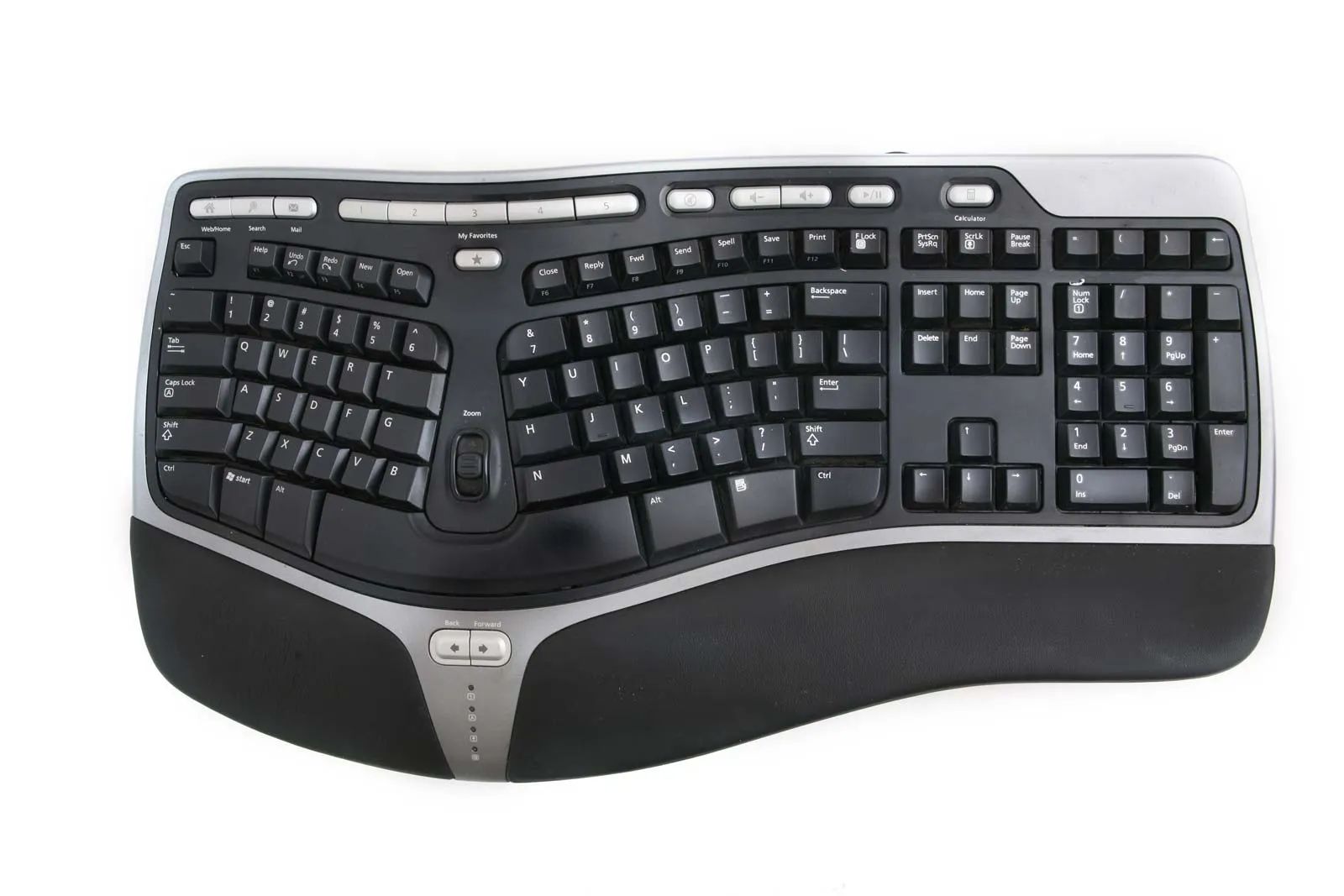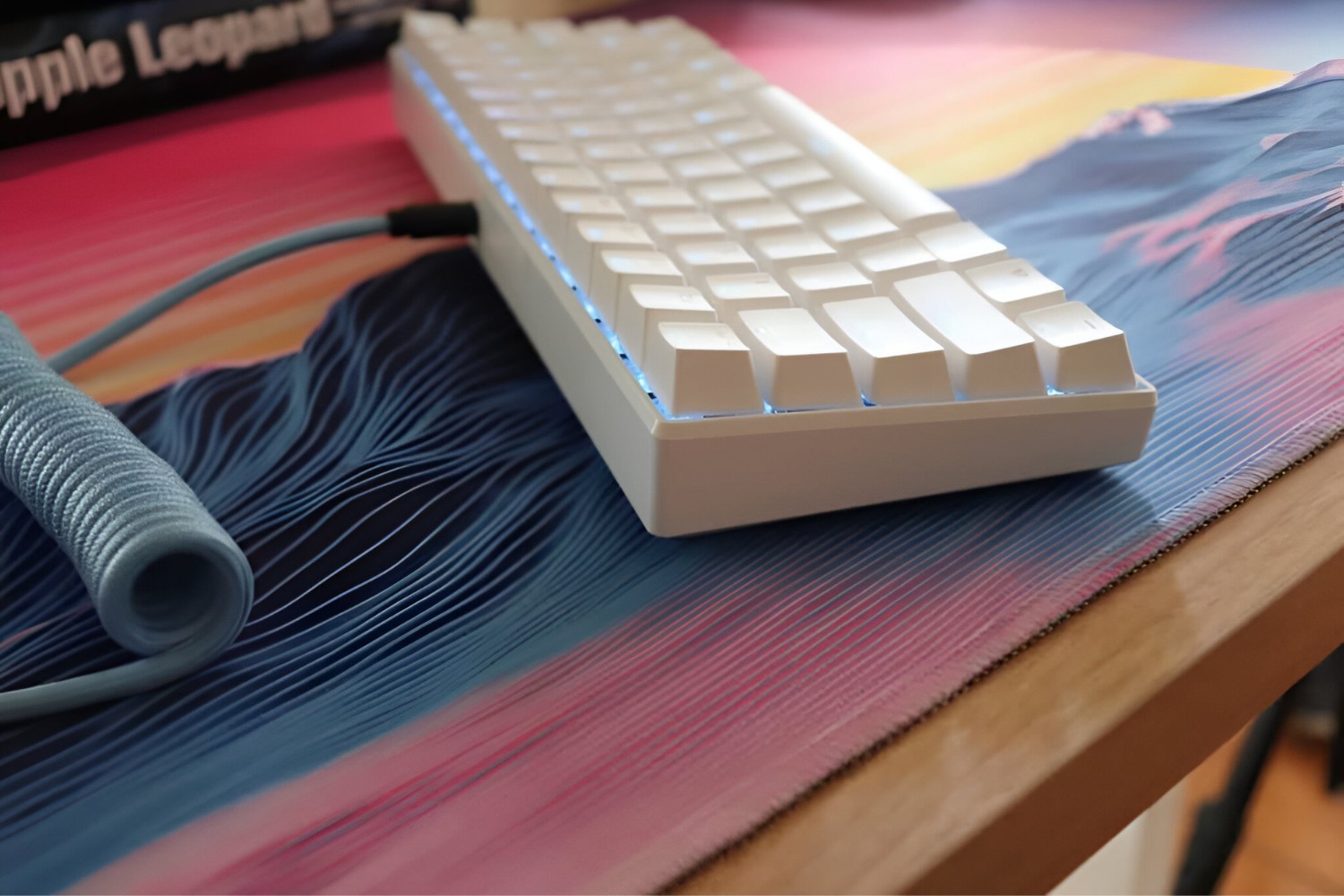Introduction
Are you in the market for a new keyboard that offers a superior typing experience? If so, you might want to consider a mechanical keyboard. Unlike traditional rubber dome keyboards, mechanical keyboards are equipped with individual switches beneath each key. These switches are renowned for their tactile feedback, durability, and customizable features, making them a popular choice for typists, gamers, and professionals alike.
In this guide, we'll delve into the world of mechanical keyboards, exploring the various factors to consider when choosing the right one for your needs. From understanding the inner workings of mechanical keyboards to deciphering the different types of switches and considering budget constraints, we'll cover it all. By the end of this journey, you'll be equipped with the knowledge to make an informed decision and find the perfect mechanical keyboard that aligns with your preferences and requirements.
Whether you're a writer seeking a keyboard that provides a satisfying typing experience, a gamer in pursuit of lightning-fast responsiveness, or a professional aiming to enhance productivity, the world of mechanical keyboards has something to offer for everyone. Let's embark on this exploration together and uncover the key elements that will guide you toward selecting the ideal mechanical keyboard for your unique needs.
Understanding Mechanical Keyboards
Before delving into the selection process, it’s essential to grasp the fundamental aspects of mechanical keyboards. Unlike their membrane counterparts, mechanical keyboards feature individual switches for each key. These switches are responsible for the distinctive tactile feedback and audible click associated with mechanical keyboards, providing a satisfying typing experience and precise actuation.
One of the key advantages of mechanical keyboards is their durability. The switches are designed to withstand tens of millions of keystrokes, ensuring longevity and reliability. This feature makes mechanical keyboards a worthwhile investment, especially for individuals who spend a significant amount of time typing or gaming.
Furthermore, mechanical keyboards offer a high level of customization. With various switch types, keycap materials, and ergonomic designs available, users have the flexibility to tailor their keyboard to suit their preferences and typing style. This level of customization not only enhances comfort but also contributes to a personalized and enjoyable typing experience.
Understanding the construction and functionality of mechanical keyboards is pivotal in the decision-making process. By recognizing the unique attributes that set mechanical keyboards apart from conventional options, individuals can make an informed choice that aligns with their specific requirements and enhances their overall computing experience.
Factors to Consider
When contemplating the purchase of a mechanical keyboard, several crucial factors should be taken into account to ensure that the chosen keyboard aligns with your needs and preferences. Understanding these considerations will guide you toward selecting a keyboard that complements your typing style, gaming habits, and overall computing requirements.
- Typing Experience: Consider the type of switches that best suit your typing style. Whether you prefer a tactile bump, audible click, or smooth linear action, selecting the appropriate switch type is vital in optimizing your typing experience.
- Intended Use: Determine the primary purpose of the keyboard. For gaming, opt for switches that offer rapid actuation and precise feedback. If typing is your primary focus, switches that provide tactile response and comfort may be more suitable.
- Key Layout: Assess the layout of the keyboard, including the presence of dedicated media keys, programmable macros, and the arrangement of function keys. These features can significantly impact usability and convenience.
- Build Quality: Evaluate the construction and materials used in the keyboard. A robust, well-built keyboard can withstand heavy usage and provide long-lasting durability.
- Noise Level: Consider the noise produced by the switches, especially if you work in a shared environment or prefer a quieter typing experience.
- Customization Options: Explore the availability of customizable features such as RGB lighting, programmable keys, and software support, which can enhance the overall functionality and aesthetics of the keyboard.
By carefully considering these factors, you can narrow down your options and pinpoint the mechanical keyboard that best suits your specific requirements. Each aspect plays a pivotal role in shaping the overall user experience, and understanding their significance will empower you to make an informed decision that aligns with your preferences and enhances your computing endeavors.
Types of Mechanical Switches
One of the defining characteristics of mechanical keyboards is the variety of switches available, each offering distinct tactile feedback, actuation force, and auditory response. Understanding the different types of switches is crucial in selecting a keyboard that aligns with your typing preferences and usage requirements.
1. Tactile Switches: These switches provide a noticeable bump and tactile feedback when a key is actuated, offering a satisfying typing experience. The Cherry MX Brown and MX Clear switches are popular examples of tactile switches, striking a balance between typing comfort and gaming responsiveness.
2. Clicky Switches: Known for their audible click and tactile bump, clicky switches, such as the Cherry MX Blue and MX Green, deliver a distinctive typing experience. While they offer excellent tactile feedback, their audible click may not be ideal for shared workspaces.
3. Linear Switches: Linear switches, including the Cherry MX Red and MX Black, provide a smooth keystroke without a tactile bump or audible click. These switches are favored by gamers for their rapid actuation and consistent feel, making them suitable for fast-paced gaming sessions.
4. Silent Switches: Designed to minimize noise, silent switches offer a quieter typing experience without compromising tactile feedback. Examples include the Cherry MX Red Silent and MX Black Silent switches, which are ideal for individuals who prefer a more discreet keyboard.
It’s essential to test various switch types to determine the one that best complements your typing style and usage scenarios. Whether you prioritize a tactile typing experience, require minimal noise output, or seek rapid actuation for gaming, the diverse range of mechanical switches ensures that there’s an option tailored to your specific needs.
Keyboard Size and Layout
When selecting a mechanical keyboard, considering the size and layout is paramount, as it directly impacts usability, desk space, and overall comfort. Mechanical keyboards are available in various sizes, each catering to different preferences and usage scenarios.
1. Full-Size Keyboards: These keyboards feature a standard layout with all the keys, including the function row, number pad, and navigation cluster. While offering comprehensive functionality, they occupy a larger footprint, making them ideal for users who require dedicated number keys and frequently utilize the function row.
2. Tenkeyless (TKL) Keyboards: TKL keyboards omit the number pad, resulting in a more compact and space-efficient design. This layout appeals to users who prioritize desk space and prefer a more streamlined keyboard without sacrificing essential keys.
3. Compact Keyboards: Compact keyboards, such as 60% or 75% layouts, further reduce the size by eliminating additional keys and function rows. While sacrificing some traditional keys, these compact designs are favored by users seeking a minimalist and portable keyboard for on-the-go productivity and gaming.
4. Custom Layouts: Some mechanical keyboards offer custom layouts, allowing users to personalize the arrangement of keys to suit their specific needs. This level of customization provides flexibility and caters to individual preferences, enhancing the overall user experience.
Understanding the size and layout options enables users to select a mechanical keyboard that aligns with their workspace, typing habits, and ergonomic preferences. Whether you require a full-size keyboard for comprehensive functionality, a compact layout for portability, or a custom design to optimize productivity, the diverse range of keyboard sizes and layouts ensures that there’s an ideal option for every user.
Backlighting and Customization
Backlighting and customization features play a significant role in enhancing the aesthetics and functionality of mechanical keyboards, offering users the opportunity to personalize their typing experience and create visually appealing setups.
1. RGB Backlighting: Many mechanical keyboards are equipped with RGB (Red, Green, Blue) backlighting, allowing users to customize the color, brightness, and lighting effects of individual keys. This feature not only adds a touch of personalization but also enhances visibility in low-light environments, making it popular among gamers and enthusiasts.
2. Programmable Keys: Some mechanical keyboards feature programmable keys, enabling users to assign custom macros, shortcuts, and functions to specific keys. This level of customization enhances productivity and gaming efficiency, allowing for tailored key configurations that suit individual preferences and workflow requirements.
3. Software Support: Certain mechanical keyboards are accompanied by dedicated software that provides extensive customization options, including advanced lighting effects, macro recording, and profile management. This software empowers users to fine-tune their keyboard settings and create personalized profiles tailored to different tasks and applications.
4. Artisan Keycaps: For enthusiasts and collectors, artisan keycaps offer a unique way to customize the appearance of a mechanical keyboard. These intricately designed keycaps, often crafted by independent artisans, add a touch of individuality and artistic flair to the keyboard, creating a visually captivating and personalized aesthetic.
By considering backlighting options, programmable keys, software support, and artisan keycaps, users can tailor their mechanical keyboard to reflect their personal style and functional requirements. Whether seeking a vibrant and dynamic lighting display, customized key configurations, or artistic keycap embellishments, the array of customization features available ensures that users can create a keyboard setup that is uniquely their own.
Budget Considerations
When exploring the realm of mechanical keyboards, it’s essential to consider budget constraints to make an informed and practical investment. While mechanical keyboards offer an array of benefits and customization options, they can vary significantly in price, making it crucial to align the features and quality with your budgetary considerations.
1. Entry-Level Options: For budget-conscious individuals, entry-level mechanical keyboards provide a cost-effective entry point into the world of mechanical switches. These keyboards often offer essential features such as durable switches, customizable backlighting, and a standard layout, making them suitable for users seeking a reliable and tactile typing experience without extravagant customization options.
2. Mid-Range Keyboards: Mid-range mechanical keyboards strike a balance between affordability and advanced features. They may offer a wider selection of switch options, robust build quality, customizable backlighting, and additional functionality such as programmable keys. These keyboards cater to users who seek a more tailored and feature-rich typing experience without venturing into premium price ranges.
3. Premium and Customized Keyboards: Premium mechanical keyboards and customized builds often command a higher price due to their premium materials, advanced customization options, and artisanal keycap designs. These keyboards cater to enthusiasts, professionals, and gamers who prioritize exceptional build quality, extensive customization, and unique aesthetics, and are willing to invest in a top-tier typing experience.
By assessing budget considerations, users can identify the most suitable mechanical keyboard that offers the desired features and quality within their financial parameters. Whether seeking an affordable entry-level option, a mid-range keyboard with advanced functionality, or a premium and customized build, the diverse range of mechanical keyboards ensures that there’s an option tailored to various budget considerations and user preferences.
Conclusion
Embarking on the journey to find the perfect mechanical keyboard involves considering a multitude of factors, each contributing to the overall typing experience, functionality, and personalization options. By understanding the inner workings of mechanical keyboards, exploring the diverse range of switch types, and evaluating size, layout, backlighting, customization features, and budget considerations, users can make an informed decision that aligns with their unique preferences and requirements.
Ultimately, the ideal mechanical keyboard is one that seamlessly integrates with your typing style, gaming habits, and daily computing endeavors. Whether you prioritize a tactile typing experience, require a compact and portable layout, seek customizable backlighting and programmable keys, or have specific budget constraints, the world of mechanical keyboards offers a diverse selection to cater to a wide spectrum of user needs.
As you navigate the landscape of mechanical keyboards, remember that the perfect keyboard is not a one-size-fits-all solution. It’s a harmonious blend of tactile satisfaction, personalized aesthetics, and functional efficiency that resonates with your individuality and enhances your overall computing experience. With the knowledge gained from this guide, you are well-equipped to embark on your quest for the ideal mechanical keyboard that complements your unique style and elevates your typing and gaming endeavors.







